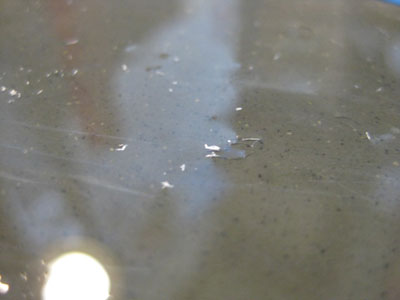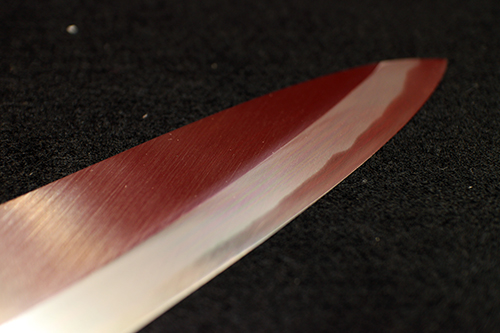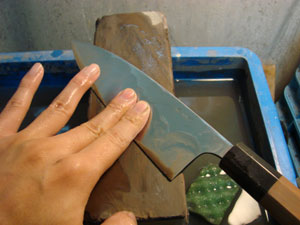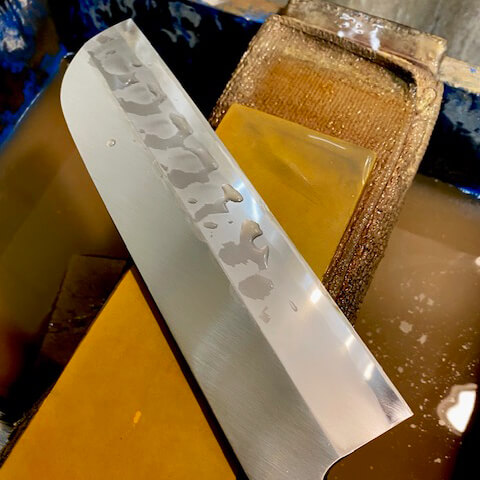Sharpening with Unsharpenable Whetstones!

I combined a hard stainless steel gyuto knife with the small blade of a household santoku knife. Normally, these knives come with a factory edge that should be sufficient, but this time, the knives were not up to par… I couldn’t bear to send them to customers as they were, so I decided to experiment and demonstrate by sharpening them.
Since I was working on aligning the small blade, I didn’t perform extensive sharpening. However, to achieve a crisp edge, I needed to remove the factory edge to some extent. So, I used a #2000 grit whetstone to quickly remove the excess edge and then refined it with a finishing stone.
The process involved simply removing the burr, much like peeling aluminum foil, so it didn’t require much polishing force. Using highly sharpening stones like the Super Cerax #3000 or Kitayama tended to create new burrs, leading to a vicious cycle.
To change my approach, I decided to reset and opt for a natural whetstone with lower polishing force. I chose a firm and coarse Ohira stone for removing the burr. I focused solely on removing the burr, sharpening in one direction only. Just a few passes of pushing on the front and pulling on the back, and the burr would crumble away.

Photo: The burrs that crumbled away on the whetstone.
In some cases, there were burrs remaining, so I found it interesting that I could easily remove them by gently rocking them back and forth while pulling from the backside. The key to this sharpening technique is to use a medium grit whetstone (around #2000) to create distinct burrs. It’s essential not to vigorously grind the blade using high-abrasive stones (natural stones, King G-1, etc.). Even with low abrasive power, the burrs will emerge when sharpening.
Stainless steel blades have some tenacity, making it challenging to remove burrs straightforwardly. The more you try hard with highly abrasive stones, the more new burrs form, and it becomes an endless process.
When sharpening with a specific angle to remove burrs, for double-edged gyuto knives and similar blades, I set the front edge at the same angle as the one used with the medium grit stone, and for the backside, I tilt it slightly (like a single-edged blade). As for the exact angle of the backside, it’s a point of concern, but gradually changing from a low angle to a higher one suddenly releases the burrs.
While starting with a high angle is also an option, experimenting with different angles helps to identify the steel’s precise limit. Today, I wrote about the critical process of refining the cutting edge for effective cutting.
(Note: “Angle” here refers to the sharpening angle used when removing burrs from the blade edge.)
- 2012-08-31(17:09) :





